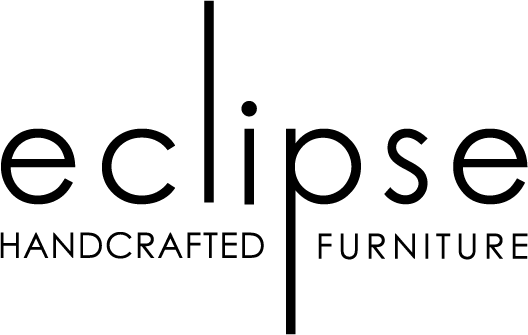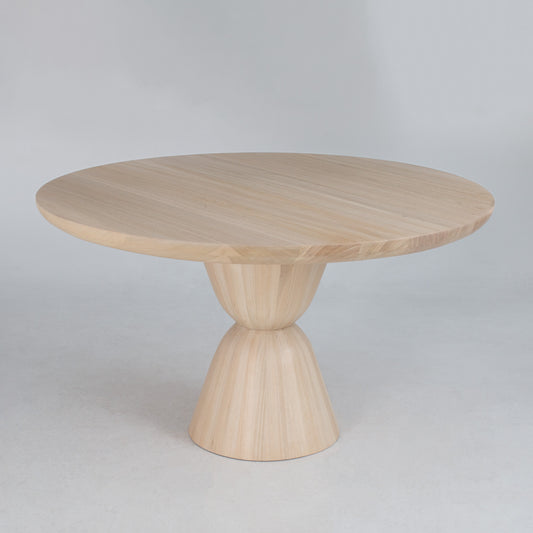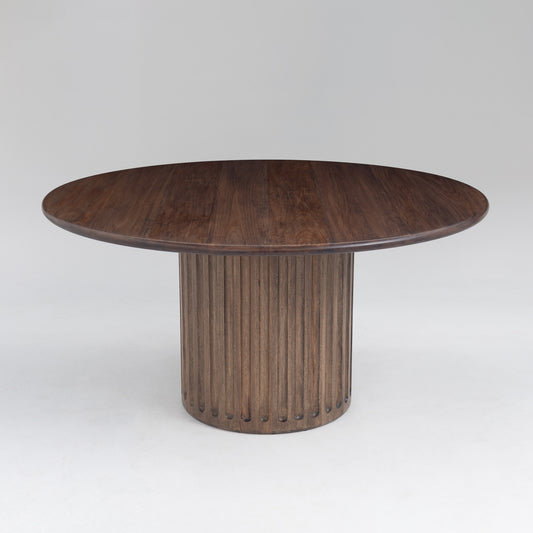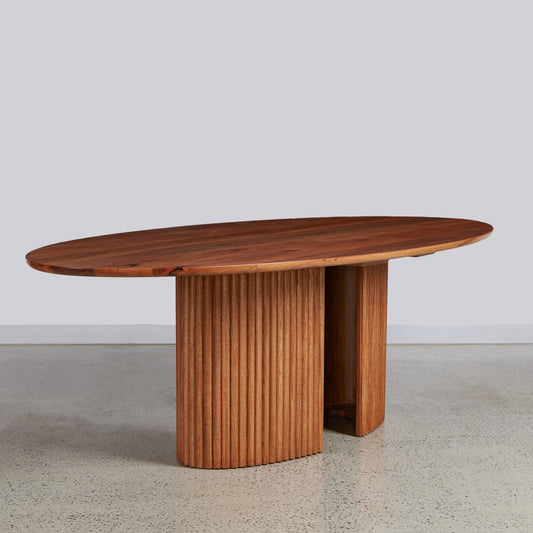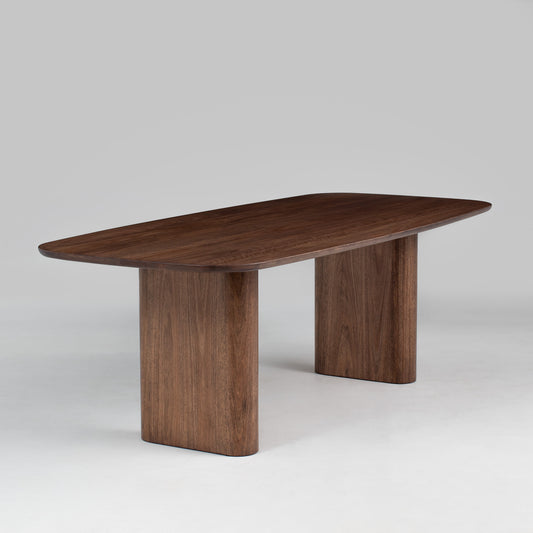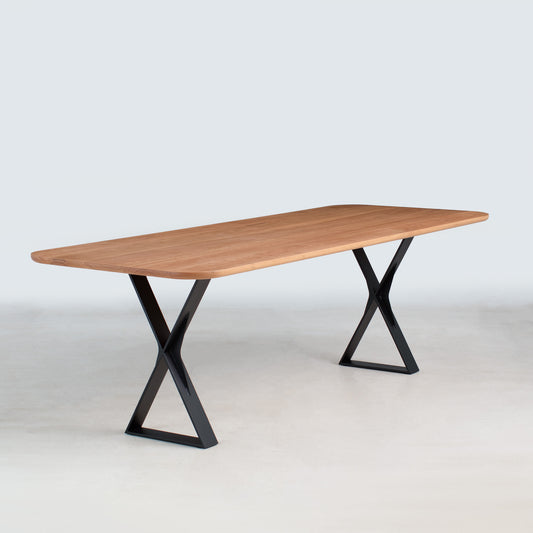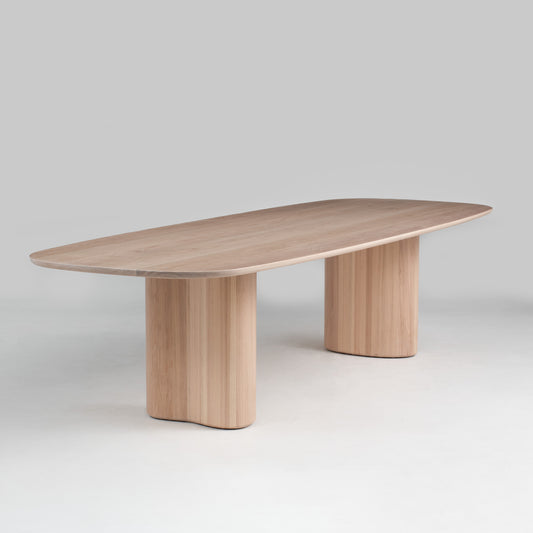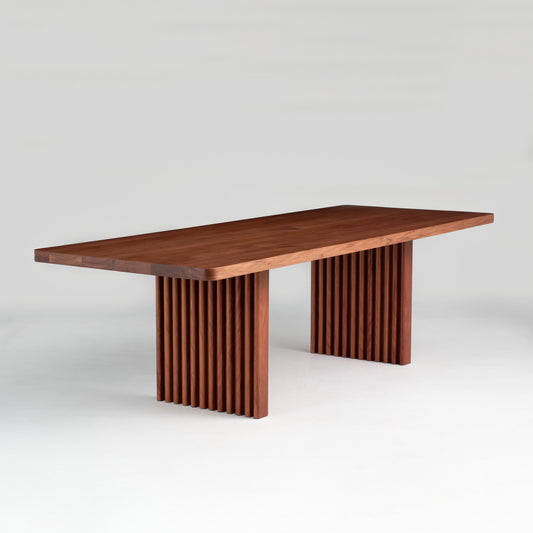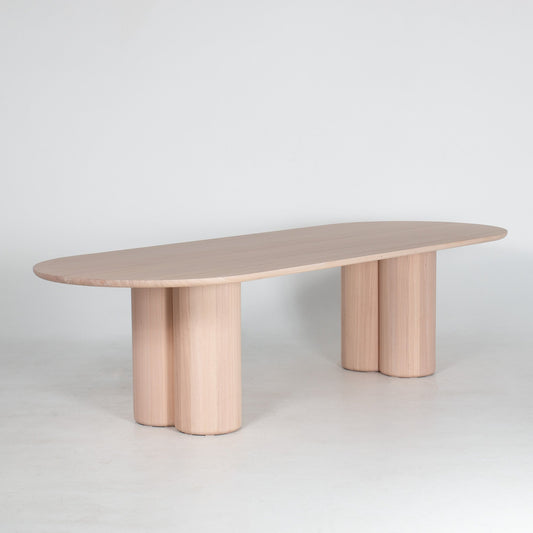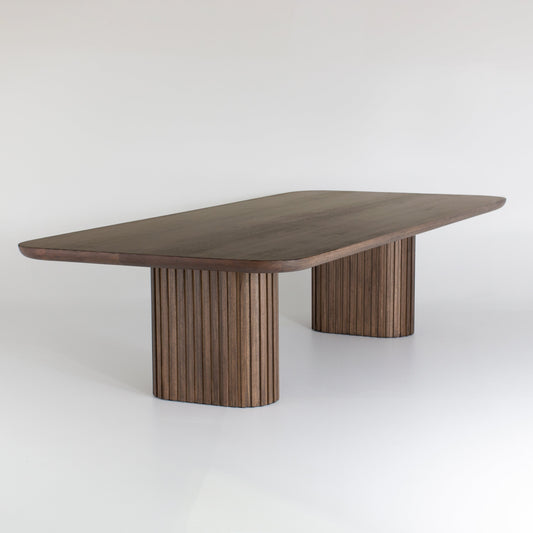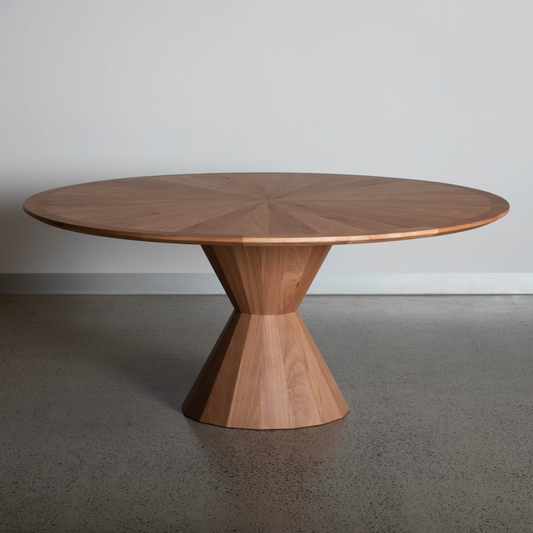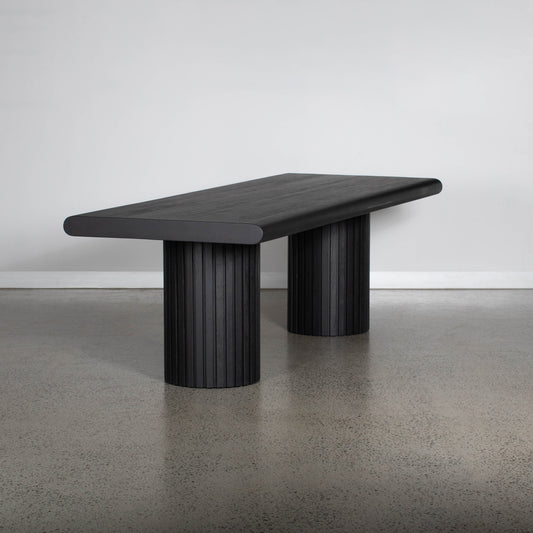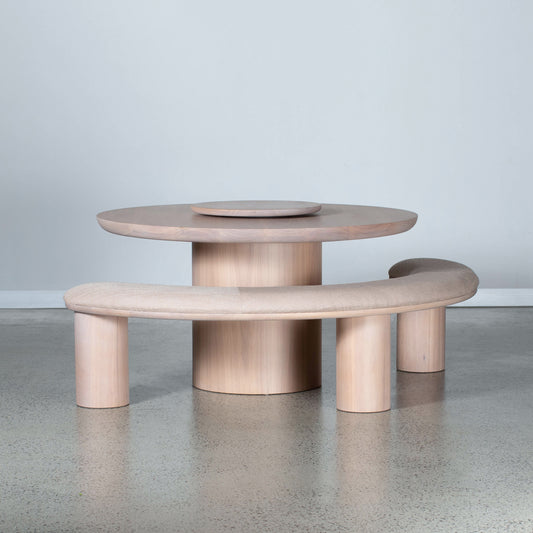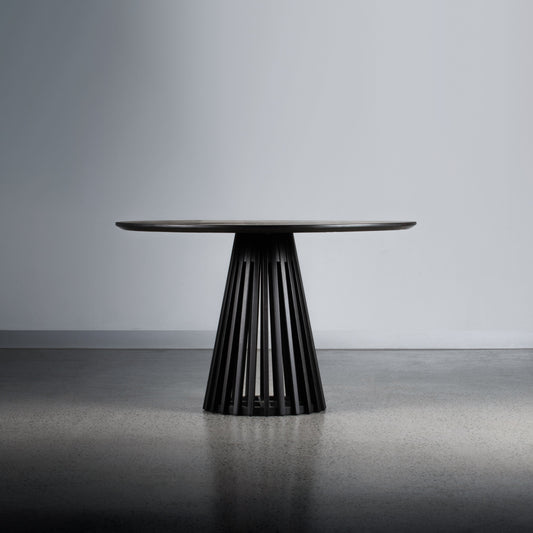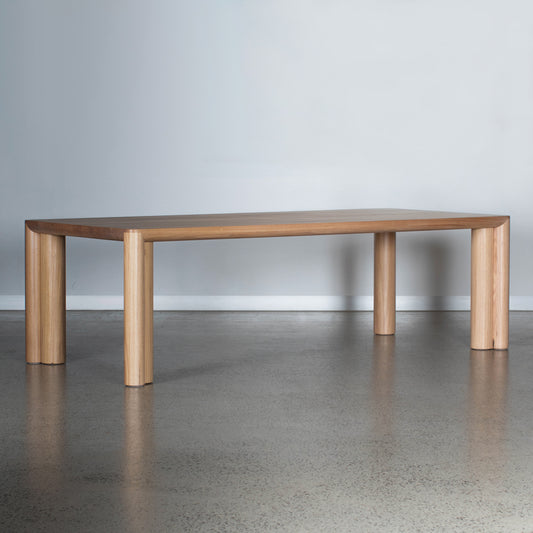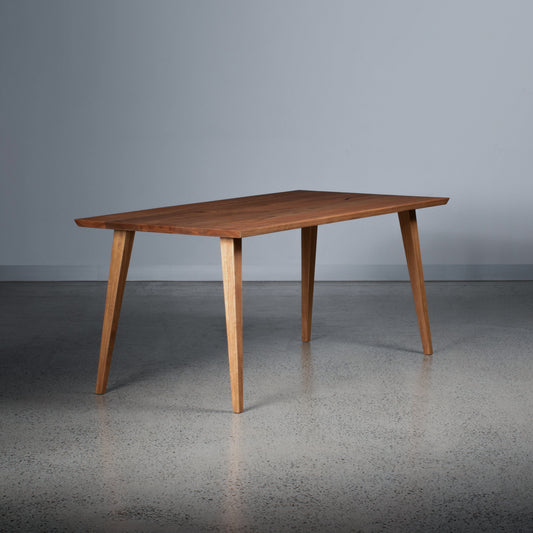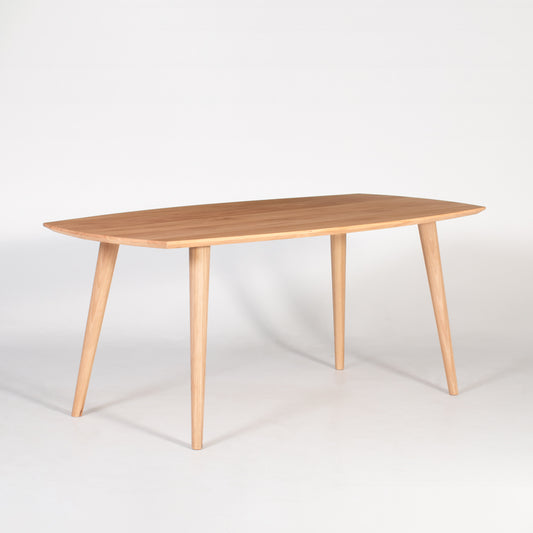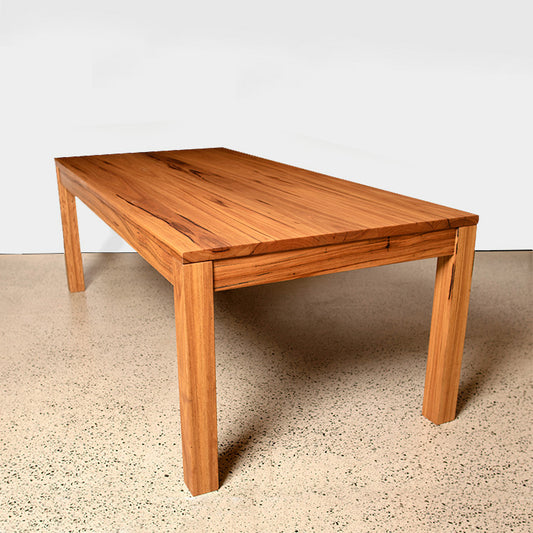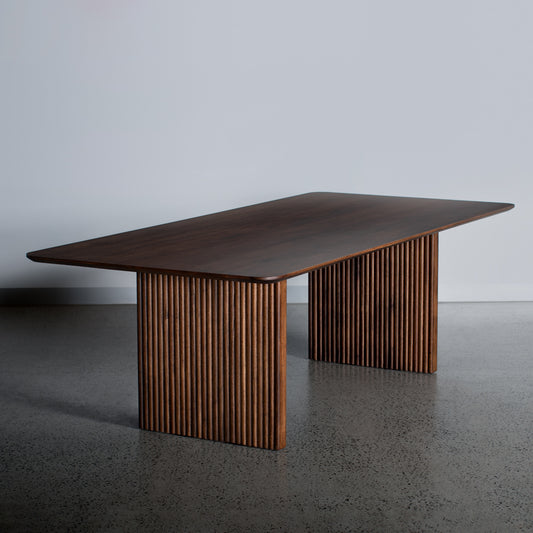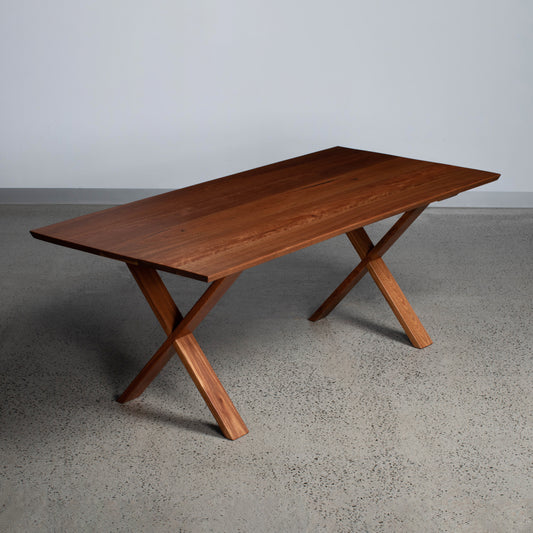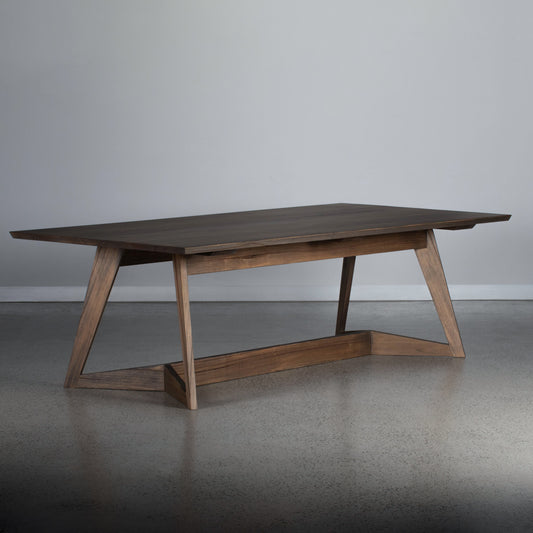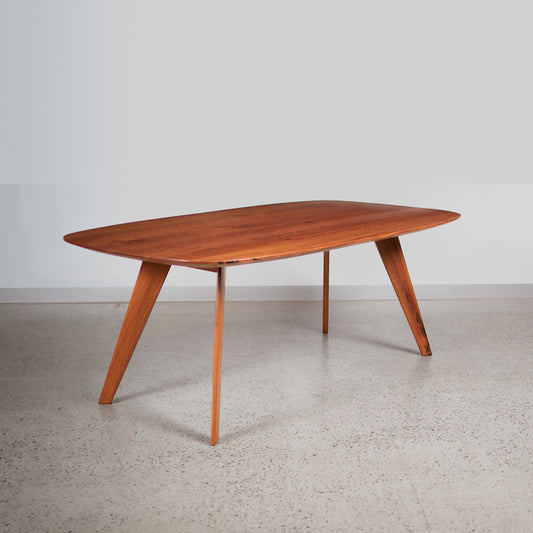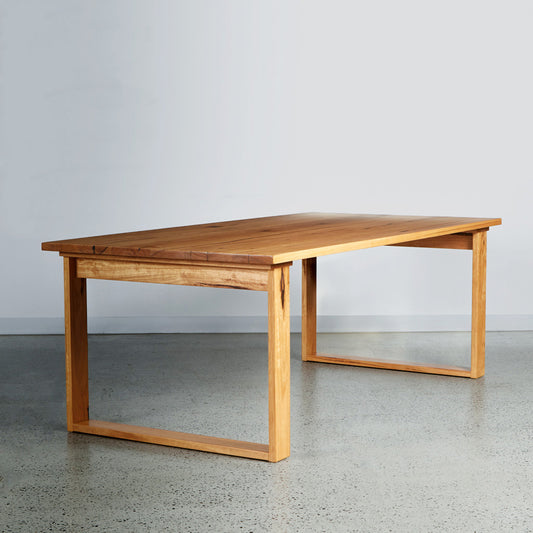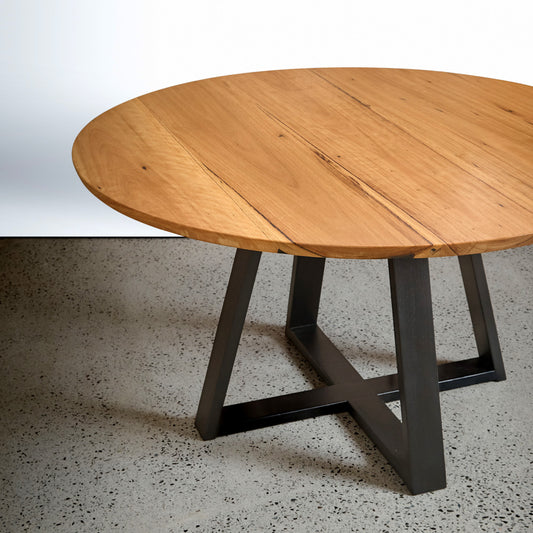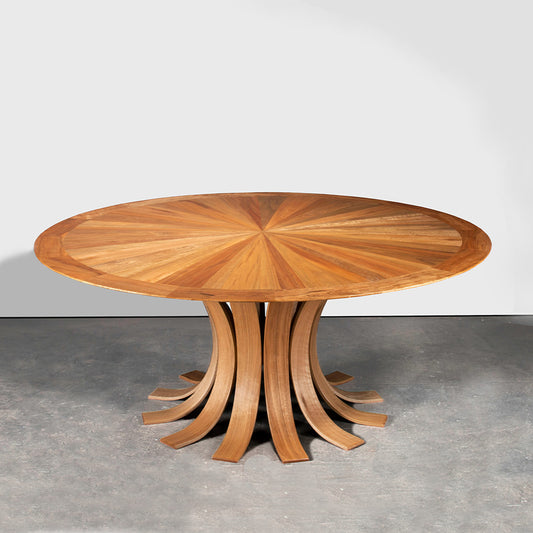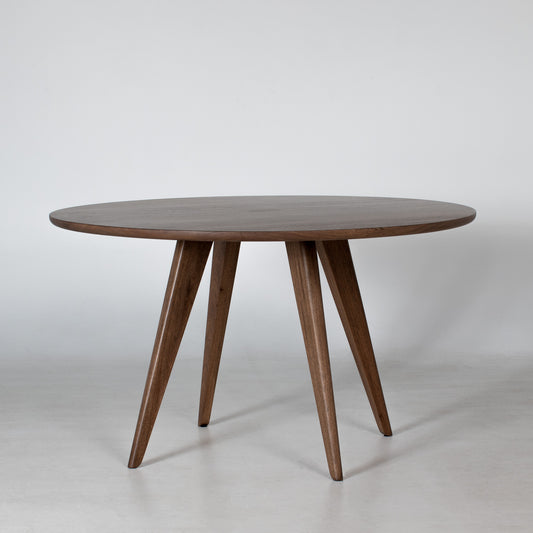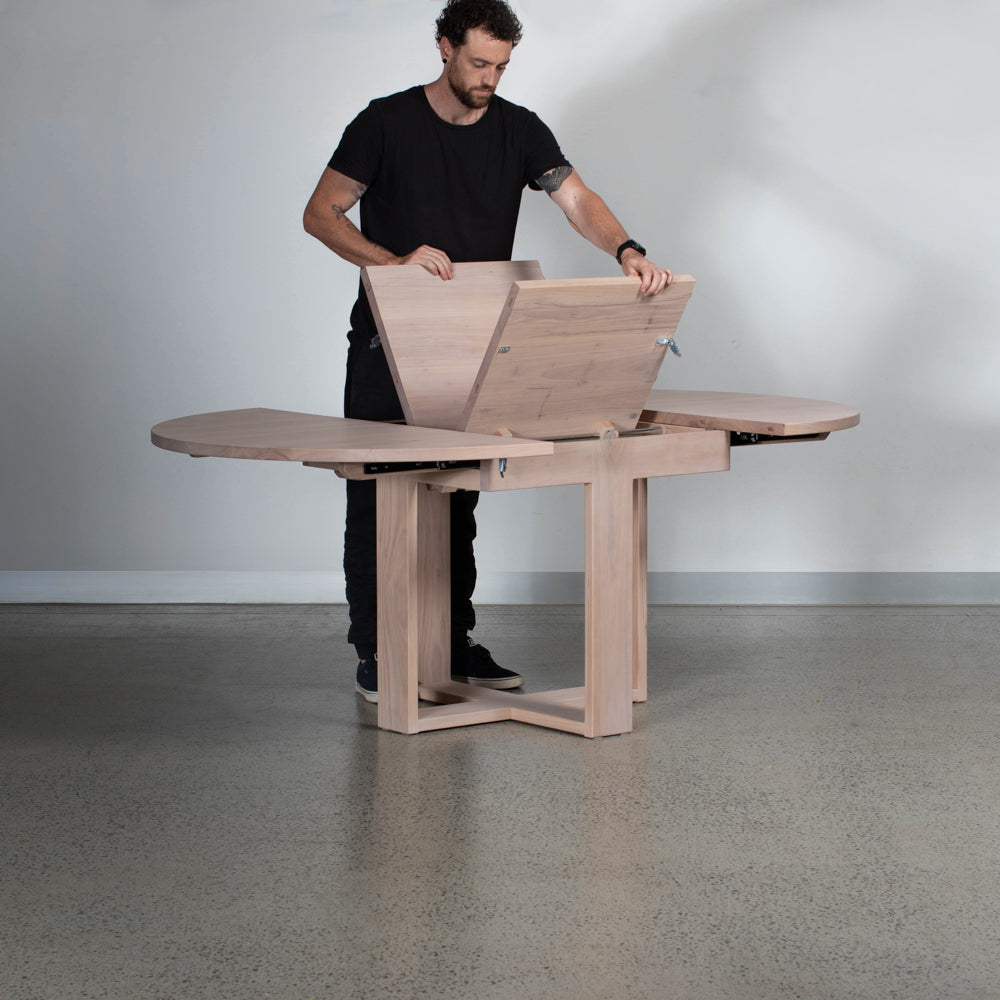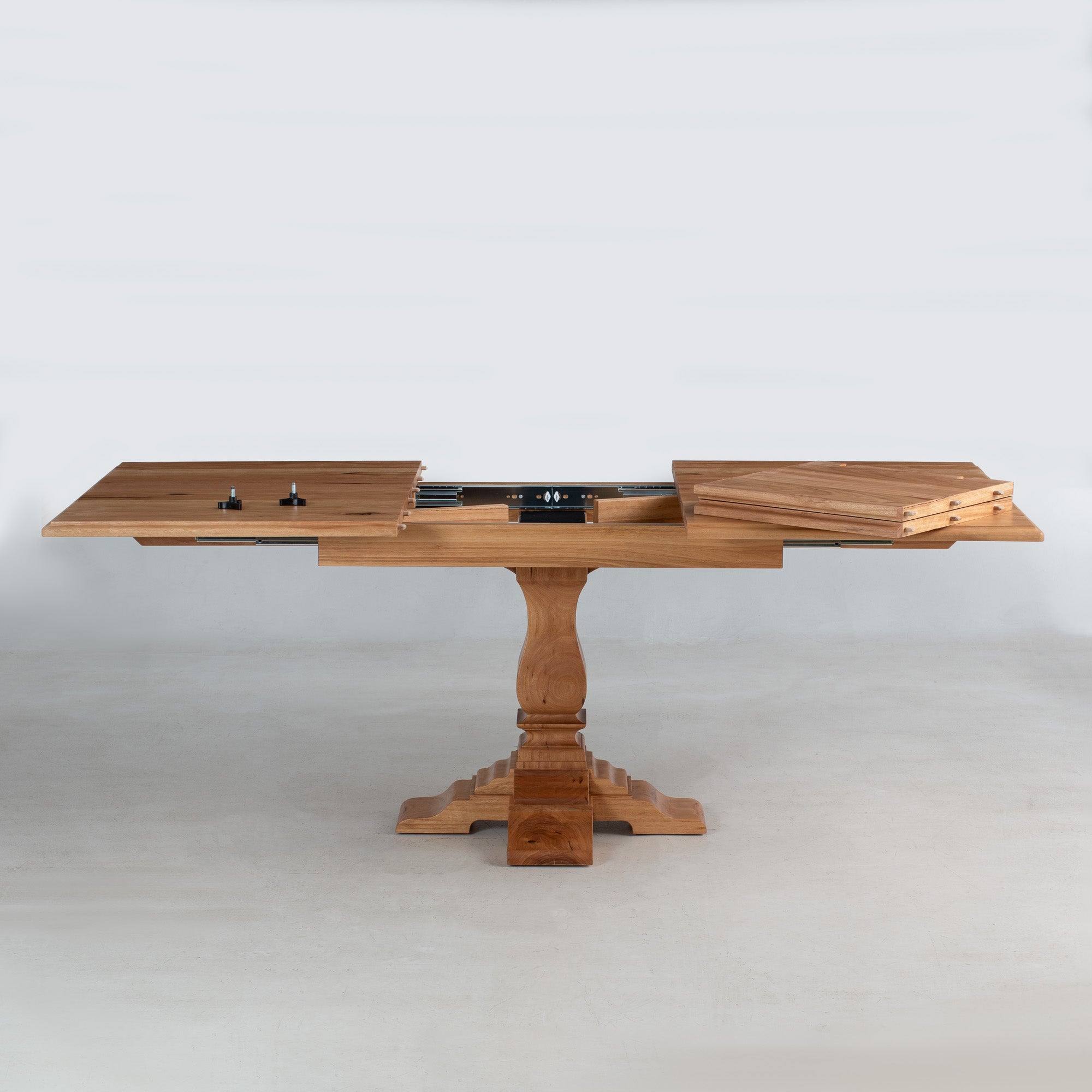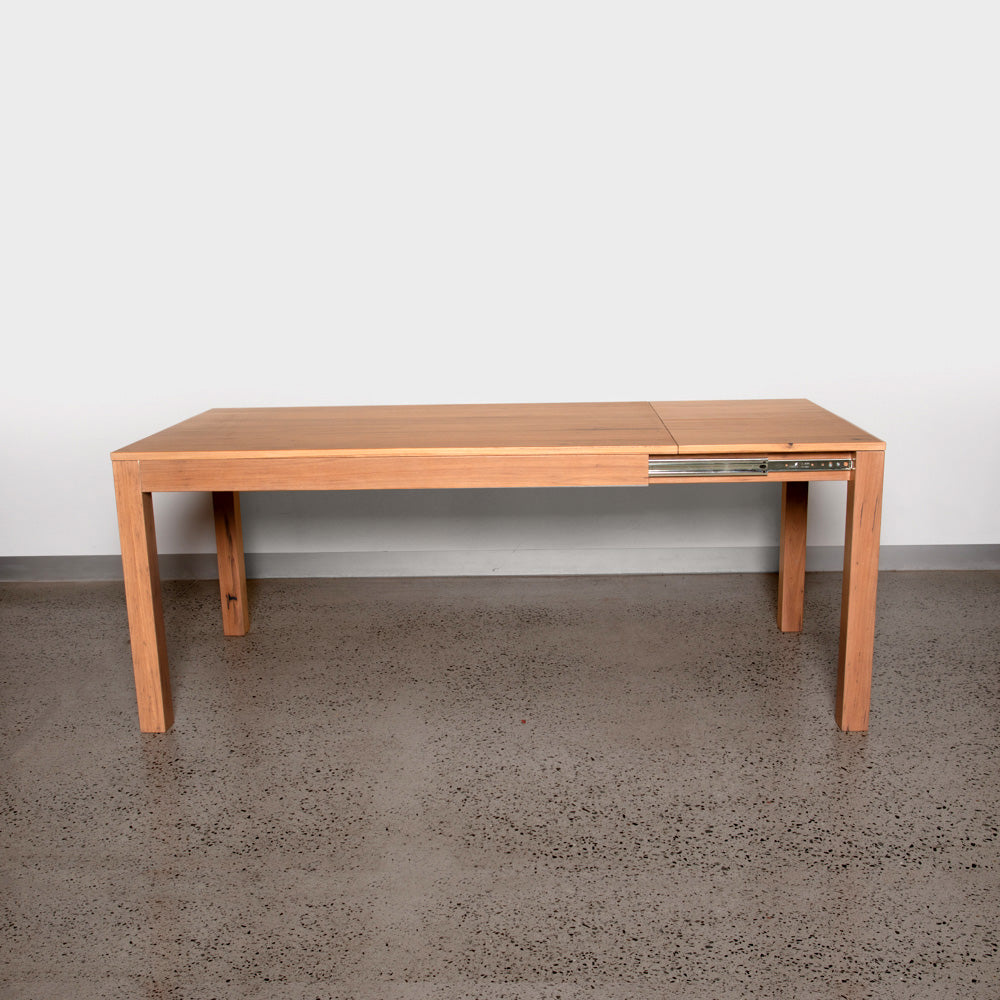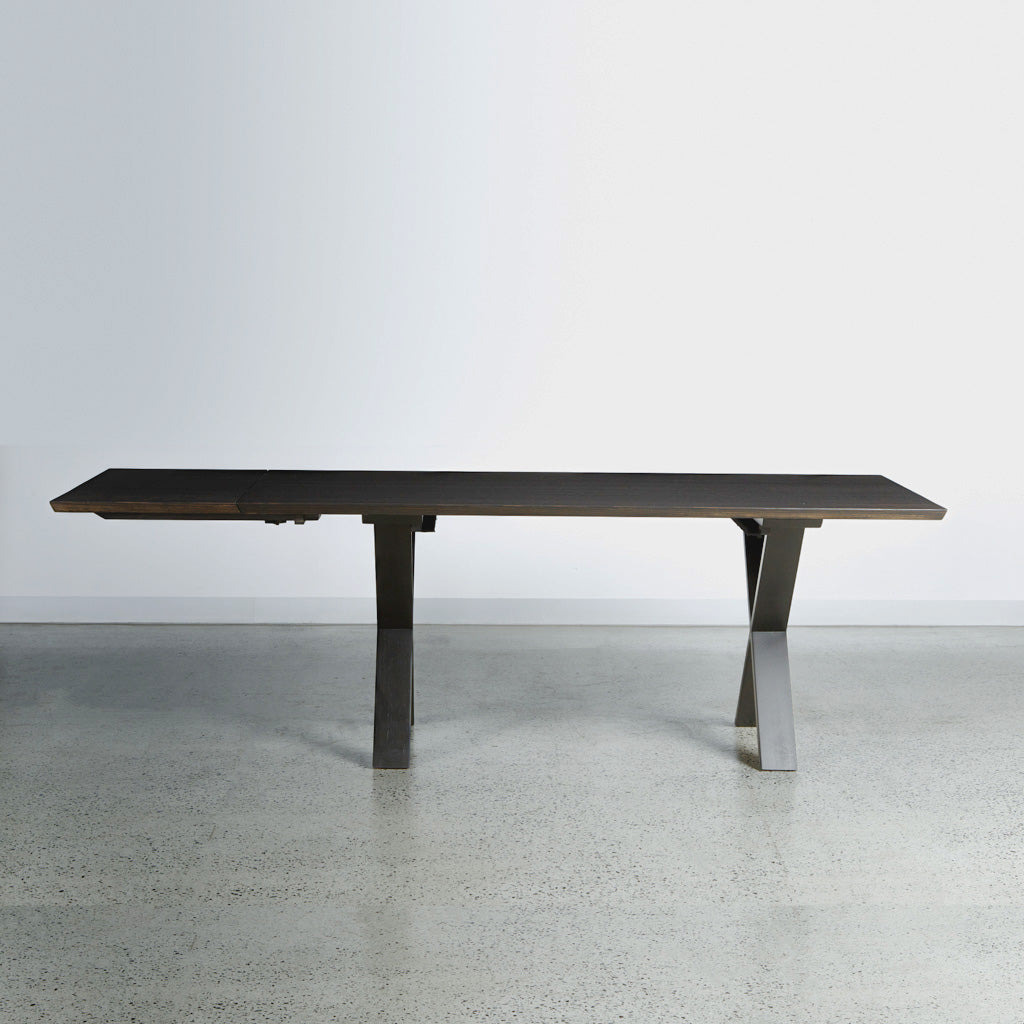Considering an extension table?
Through our 30+ years of experience we have developed a system that allows for any table design to become extendable, allowing us to cater for those who value both aesthetics and versatility in their dining space. Below we explore the various types of extension dining tables, how they work, what designs they are appropriate for, what shape table they can work with (round or rectangle) and their pros and cons.
Whether you're hosting a big dinner party or need extra seating for a casual meal, extension dining tables offer a solution that's both elegant and adaptable, making them a valuable asset for any homeowner.
The options below are only to show the extension mechanisms available, you are not limited to these base designs.
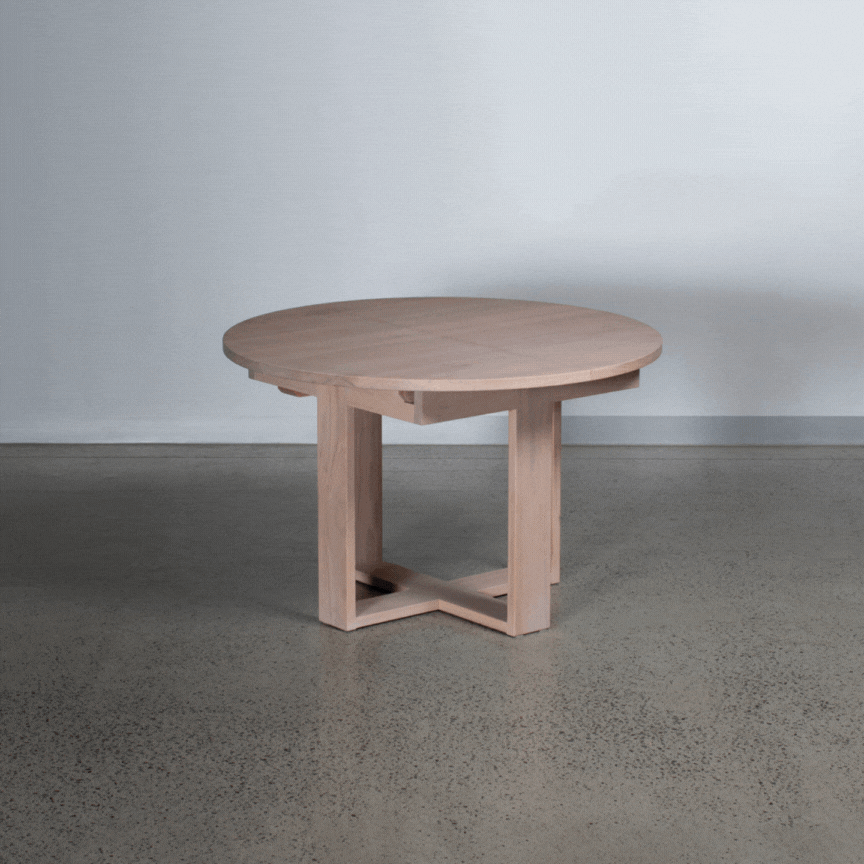
Option 1.
Butterfly Pivot
The butterfly pivot extension is the traditional style found on old Parker & Chiswell dining tables. The table top separates in the center to reveal a folding custom-veneer extension leaf that pivots into place. The top is then pushed back together, guided by locator dominoes, and secured with turn wheels.
Images Show: Our Round Ulara Crossover Base
-
Pros
- Extension leaves stored within table.
- Design is elegant and looks impressive when in action.
- Can work with round & rectangle shaped tables.
-
Cons
- Join visible in center of table when un-extended.
- Timber grain cannot line up when extended.
- Extension leaf will not expand/contract with table top.
- Limited range of base options due to pivot mechanism in center.
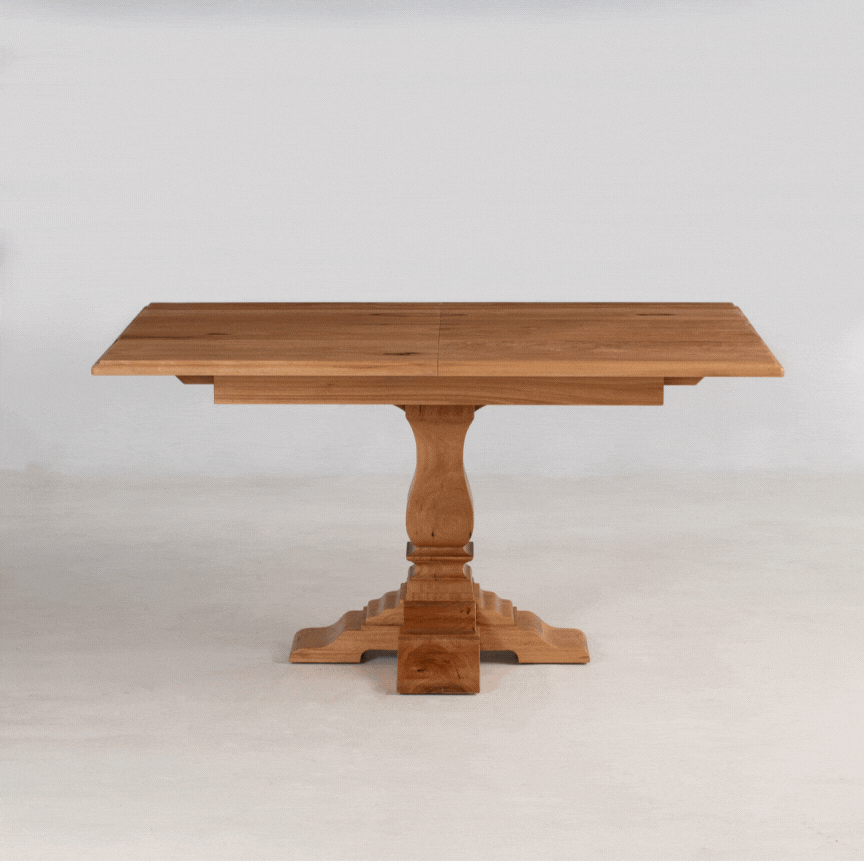
Option 2.
Butterfly Lift
The butterfly lift extension is similar to the Option 1, simply without the pivot mechanism. The table top opens in the center to reveal a folding custom-veneer extension leaf that can be lifted out and opened into place. The top then pushes back together, guided by locator dominoes, and secured with turn wheels.
Images Show: Our Classique Design Base
-
Pros
- Extension leaves stored within table.
- Design works with a large range of base options, including single pedestals.
- Can work with round & rectangle shaped tables.
-
Cons
- Join visible in center of table when un-extended.
- Timber grain cannot line up when extended.
- Extension leaf will not expand/contract with table top.
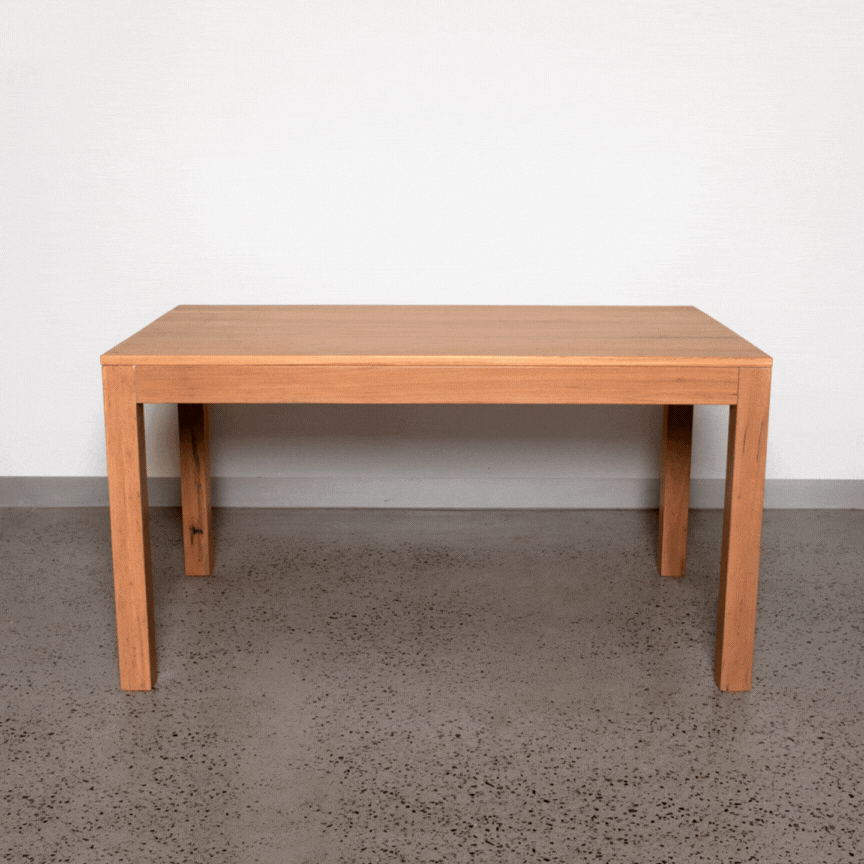
Option 3.
Butterfly End
The butterfly end extension is a folding leaf that is stored under the table, at the ends. It can be made with a lift or pivot mechanism. The base of the table extends out revealing the folding custom-veneer extension leaf. Once into position, the base pushes back in securing the extension leaf.
Images Show: Our Bondi Design Base
-
Pros
- Extension leaves stored within table.
- Most stable option as base extends in length.
- No join in center of table when un-extended.
- Timber grain will always line up.
- Can have one or two extension leaves.
-
Cons
- Extension leaf will not expand/contract with table top.
- Only works with 4 x corner leg designs.
- Hardware more exposed when extended.
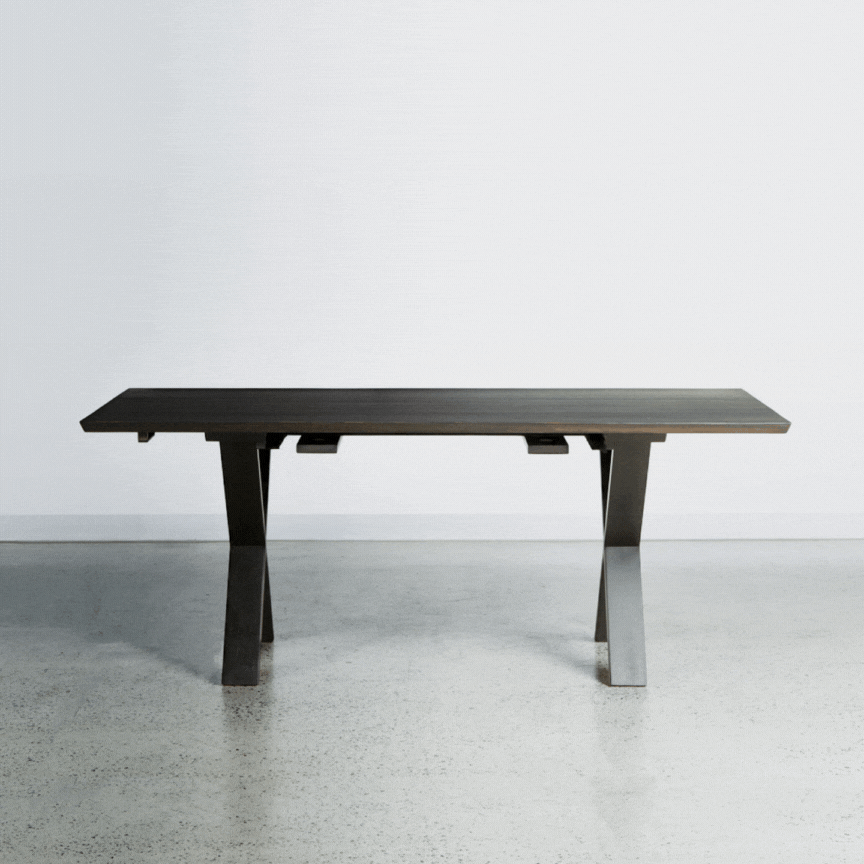
Option 4.
Leaf on Ends
The leaf on ends is simple, functional and cost effective. The extension leaf is a solid single piece that can be stored under the table or elsewhere. It has two arms that slot into brackets, concealed under the table, at one or both ends. Once in position, the piece is secured into place with turn wheels.
Images Show: Our Xavier Design Base
-
Pros
- No join in center of table when un-extended.
- Timber grain will always line up.
- Streamline design removes need for housing under table.
- Design works with a large range of base options.
- Can have one or two extension leaves.
-
Cons
- Leaves can be heavy and may require two people to operate.
- Extension leaves may need to be stored elsewhere, depending on table specifications.
- Doesn't work with round shaped tables.
Any of our tables...
can be made into an extension table.
-
The Natalia Design
Regular price From $8,442.00 AUDRegular priceUnit price / per -
The Agnes Design
Regular price From $6,850.00 AUDRegular priceUnit price / per -
The Harrington Design
Regular price $8,640.00 AUDRegular priceUnit price / per -
The Murcia Design
Regular price From $7,395.00 AUDRegular priceUnit price / per -
The Xander Design
Regular price From $3,450.00 AUDRegular priceUnit price / per -
The Pinto Design
Regular price From $7,750.00 AUDRegular priceUnit price / per -
The Lincoln Design
Regular price From $6,250.00 AUDRegular priceUnit price / per -
The Coco Design
Regular price From $10,000.00 AUDRegular priceUnit price / per -
The Malki Design
Regular price From $8,250.00 AUDRegular priceUnit price / per -
The Starburst Tahlia Design
Regular price From $8,422.00 AUDRegular priceUnit price / per -
The Norse Design
Regular price From $8,820.00 AUDRegular priceUnit price / per -
The Catalina Design
Regular price From $6,350.00 AUDRegular priceUnit price / per -
The Chloe Design
Regular price From $7,148.00 AUDRegular priceUnit price / per -
The Bergonia Design
Regular price From $12,037.00 AUDRegular priceUnit price / per -
The Accent Design
Regular price From $2,630.00 AUDRegular priceUnit price / per -
The Kono Design
Regular price From $4,960.00 AUDRegular priceUnit price / per -
The Bondi Design
Regular price From $3,680.00 AUDRegular priceUnit price / per -
The Buchanan Design
Regular price From $5,700.00 AUDRegular priceUnit price / per -
The Xavier Design
Regular price From $3,570.00 AUDRegular priceUnit price / per -
The Y Base Matego Design
Regular price From $5,695.00 AUDRegular priceUnit price / per -
The Hunter Design
Regular price From $3,890.00 AUDRegular priceUnit price / per -
The Ulara Design
Regular price From $3,865.00 AUDRegular priceUnit price / per -
Axil Crossover Design
Regular price From $5,384.00 AUDRegular priceUnit price / per -
The Odessa Design
Regular price From $11,754.00 AUDRegular priceUnit price / per -
The Logan Design
Regular price From $4,992.00 AUDRegular priceUnit price / per
